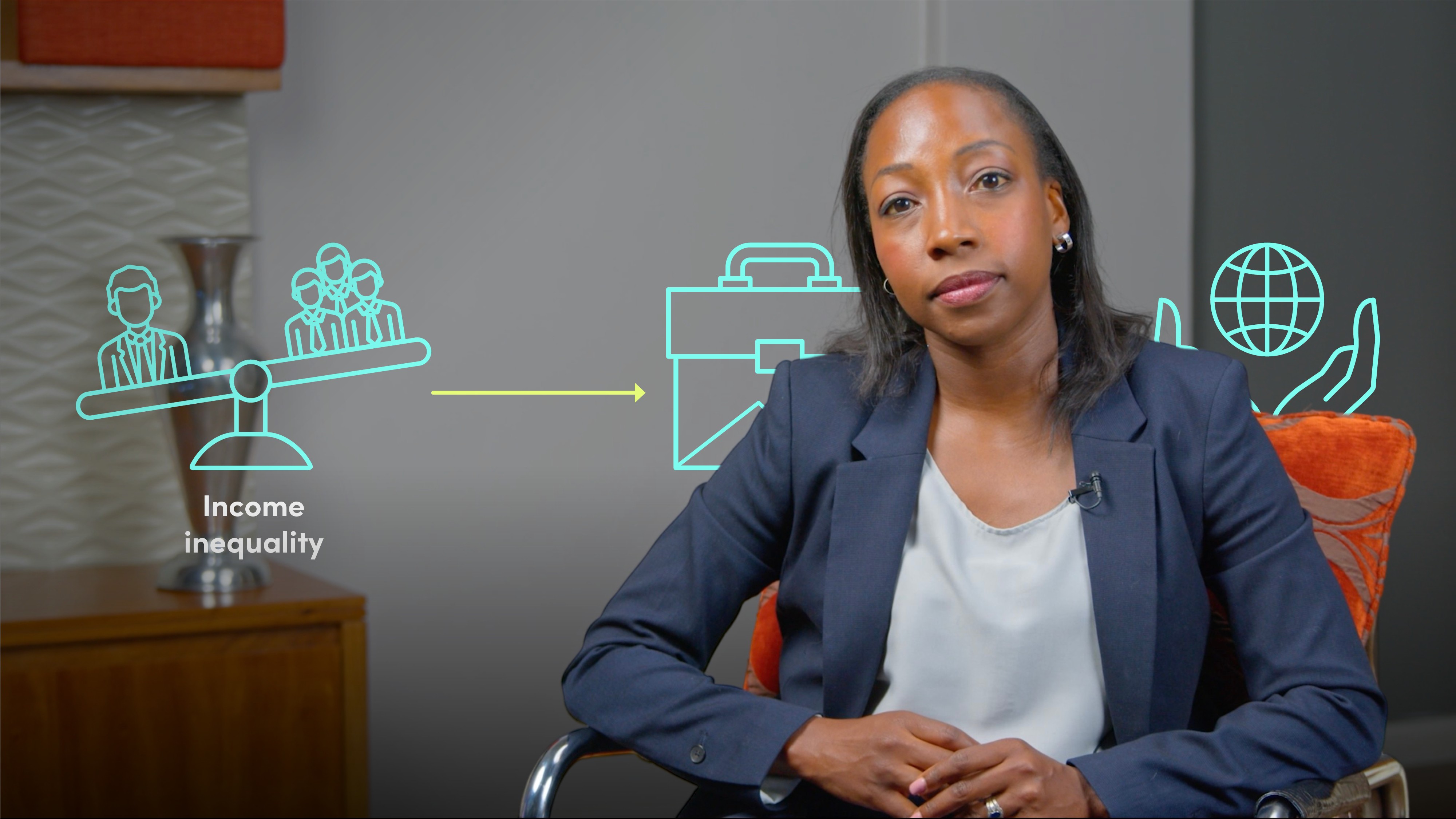
The 'S' in ESG

Karimi Fondaumiere
Director and co-founder
Exploring the significant role of the 'S' in ESG, Karimi delves into how businesses navigate the complexities of social impact, highlighting the trade-offs between profitability, individual and collective well-being, and the importance of cultural context.
Exploring the significant role of the 'S' in ESG, Karimi delves into how businesses navigate the complexities of social impact, highlighting the trade-offs between profitability, individual and collective well-being, and the importance of cultural context.
Subscribe to watch
Access this and all of the content on our platform by signing up for a 7-day free trial.

The 'S' in ESG
9 mins
Key learning objectives:
Understand what the “S” in ESG means and how it can shape the ethical footprint of an organisation
Identify social problems across a broad spectrum and understand how they are interlinked through “complex” systems
Outline the trade-offs that exist when balancing social impact within ESG
Overview:
Social responsibility in corporate settings involves addressing issues such as labor practices, human rights, and community engagement. Measuring these impacts is challenging, as addressing social issues often entails balancing profitability, short-term gains, and long-term sustainability. A balanced, culturally sensitive approach is necessary to promote positive social change and align business practices with global development goals.
Subscribe to watch
Access this and all of the content on our platform by signing up for a 7-day free trial.
In 2020, Rio Tinto, a global mining giant, faced severe backlash for destroying a 46,000-year-old Indigenous site in Juukan Gorge, Western Australia. The sacred caves, significant for their archaeological value, were damaged beyond repair during an iron ore mine expansion. This act caused irreparable harm to the cultural heritage of the Indigenous people and ignited widespread public outrage. Consequently, the CEO and other top executives resigned in September 2020, and Rio Tinto's board faced restructuring due to inadequate oversight. The incident highlighted the need for intensified scrutiny of corporate social responsibility, particularly the social aspect of ESG.
What is the 'S' in ESG, and why is it important?
The 'S' in ESG stands for the relationships and impacts an organisation has on people and society through its operations, policies, and actions. It encompasses areas like labour practices, diversity and inclusion, human rights, product safety, and community engagement. This aspect helps shape a company's ethical footprint by prioritising stakeholder wellbeing and social responsibility. It aligns with the UN Sustainable Development Goals (SDGs) and contributes to long-term sustainability and value creation for multiple stakeholders, both internal and external.
How does the EU's social taxonomy aim to integrate social considerations into business practices?
The EU's social taxonomy is a developing framework that defines social objectives, criteria, and performance indicators for businesses to align with sustainable and responsible practices. It requires companies to analyse activities against clear objectives, addressing different groups of stakeholders. The proposed objectives include:
- Workforce: Decent work, including value chain workers
- End users: Adequate living standards and wellbeing
- Communities: Inclusive and sustainable communities and societies
This framework aims to balance standards with flexibility, ensuring practical implementation and fostering a socially responsible business environment.
Why are social problems considered part of complex systems?
Social problems are viewed as part of complex systems because they consist of many interdependent and connected elements. According to Karoline Wiesner, Professor of Complexity Science, these systems are difficult to model due to their interactions and dependencies. Social issues rarely exist in isolation; addressing one problem can inadvertently impact another. For instance, tackling income inequality might affect job creation, which in turn impacts community stability. Therefore, a holistic understanding of these interconnected issues is essential to avoid unintended consequences and to navigate social complexity effectively.
What are some common trade-offs within social impact and ESG?
Balancing social impact within ESG often involves trade-offs. Some of these include:
- Profitability vs Social Responsibility: Businesses may need to implement cost-cutting measures to remain profitable, which can conflict with maintaining fair labour practices. A nuanced understanding of financial decisions and social outcomes is essential
- Individual vs Collective Wellbeing: Decisions aimed at individual wellbeing might have collective repercussions. For example, prioritising job security for a few could limit employment opportunities for the broader community
- Short-term Gains vs Long-term Sustainability: Solutions for short-term efficiency, like supply chain improvements, might harm the environment or cause suppliers to close down, leading to long-term reputational damage
- Adapting to Cultural Context: Positive social impacts in one culture might be perceived differently in another. For instance, actions empowering women in one culture could challenge traditional norms in another. Adapting strategies to diverse cultural norms is crucial for meaningful social interventions
Subscribe to watch
Access this and all of the content on our platform by signing up for a 7-day free trial.

Karimi Fondaumiere
There are no available Videos from "Karimi Fondaumiere"





























